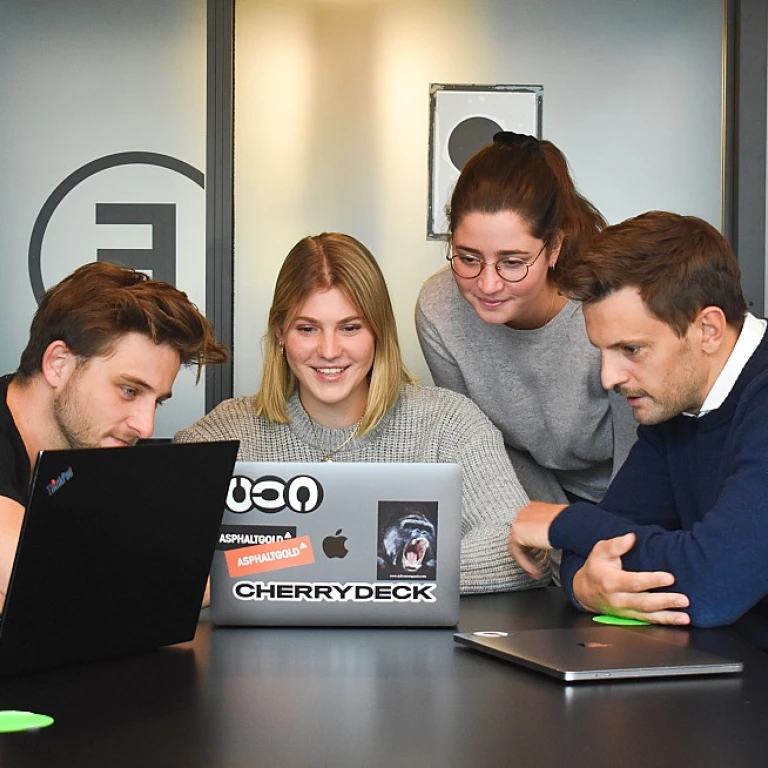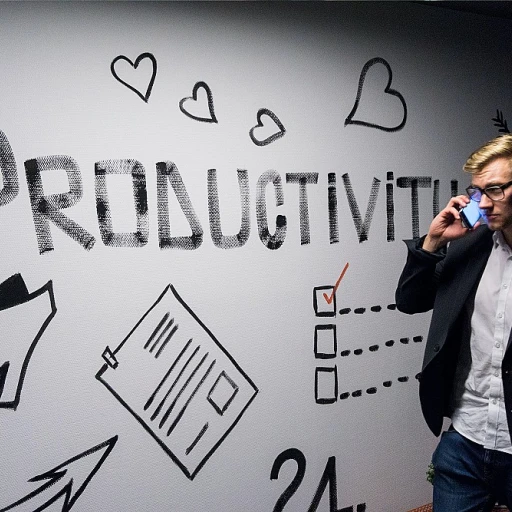The Rise of Automation and AI in the Workplace
Automation and AI: The Evolving Landscape of Employment
The dawn of a new decade brings with it the transformative force of automation and artificial intelligence (AI), reshaping the very essence of how we work. From customer service bots to complex data analysis, AI is no longer a futuristic concept, but a present reality that businesses and employees must reckon with.
In this rapidly advancing landscape, the integration of AI into everyday work processes is not about replacing human roles entirely but rather complementing them. Automated systems are taking over repetitive, mundane tasks, freeing up human workers to shift their focus to strategic and creative problem-solving tasks. This shift demands a new set of skills and adaptability from employees, paving the way for a workforce that prioritizes digital literacy and emotional intelligence.
Already, sectors like manufacturing, transportation, and healthcare are experiencing the impact of automation. In manufacturing, robots are assembling products with precision and speed while predicting maintenance needs. In the realm of transportation, autonomous vehicles are becoming a feasible reality, though their widespread adoption hinges on navigating regulatory landscapes and public trust. Healthcare, perhaps one of the most dynamic fields, sees AI in diagnostic tools and patient management systems, enhancing efficiency and accuracy in patient care.
As these technologies advance, the need for businesses to strike a balance between leveraging AI and maintaining a human touch becomes paramount. Investing in employee re-skilling and up-skilling programs is crucial to ensure the workforce can thrive alongside technological advancements.
Moreover, the rise of automation and AI presents new opportunities for innovation and job creation in fields yet to be imagined. This evolving employment landscape prompts us to rethink traditional job roles and embrace the concept of lifelong learning. For those navigating these changes, embracing the potential of AI means more than survival—it signals a path to prosperity and growth in the job market of tomorrow.
For a deeper understanding of how remote work is influencing these trends,
click here.
Digital Skills: The New Currency for Employees
Digital literacy: a key to thrive in tomorrow's job market
As technology advances at an unprecedented pace, digital skills have become the new currency in the workplace. The ability to navigate various digital platforms and effectively use tools such as AI and automation has become crucial for employees seeking to remain competitive in their fields.
Adapting to this digital transformation requires a commitment to continuous learning and upskilling. Many organizations are recognizing the importance of providing training opportunities for their workforce to develop these essential skills. This not only benefits the employees but also enhances the overall productivity and innovation within the company.
Moreover, the emergence of remote and flexible work arrangements further highlights the necessity of possessing strong digital competencies. Employees who can seamlessly transition between different digital environments, communicate effectively online, and collaborate through virtual platforms are highly valued in today's job market.
The shift towards a digitized workplace also emphasizes the importance of human-machine teaming, where employees engage with AI technologies in a collaborative manner. This symbiosis between human intuition and machine processing can lead to improved decision-making and problem-solving capabilities, opening new avenues for innovation. For more insights on how
remote work is shaping the future of work, consider exploring our dedicated article on this trend.
Ultimately, acquiring and honing digital skills is not just a necessity; it is an opportunity to redefine work roles and create more dynamic, efficient, and rewarding career paths in the future job landscape.
The Shift to Remote and Flexible Work Arrangements
Redefining the Workplace: Remote and Flexible Work Practices
As we move closer to 2030, the landscape of work continues to evolve, steering away from conventional 9-to-5 roles and embracing more adaptable arrangements. The rapid advancements in technology and communication tools are enabling this transition, allowing employees and employers alike to rethink the structure of the workday.
This shift towards remote and flexible work arrangements is largely driven by the growing demand for work-life balance and the need to attract diverse talents from across the globe. Organizations are increasingly recognizing that offering flexibility not only enhances employee satisfaction but also contributes to higher productivity and efficiency. To further explore this, take a look at how embracing a
flexible work approach is transforming the future of work.
The tools and platforms supporting these flexible work models are becoming more sophisticated, breaking down the barriers of time zones and locations. As a result, the traditional office setting is becoming less of a necessity, opening up new opportunities for both individuals and companies.
This modern way of working also brings about new challenges, such as ensuring collaboration, managing remote teams, and maintaining productivity. However, as technology progresses, there are more innovative solutions being developed to address these hurdles. The future workplace is set to be a hybrid model, which seamlessly integrates remote tasks with physical presence when needed.
In conclusion, the transition to remote and flexible work arrangements is an exciting development in the workforce, promising numerous benefits if implemented thoughtfully. As we continue to navigate this journey towards 2030, it's crucial for businesses to remain adaptive and open-minded, fostering an environment where flexibility and productivity thrive together.
Human-Machine Teaming: A New Era of Collaboration
Collaborative Synergy Between Humans and Machines
As we venture deeper into the future of work, one of the most intriguing developments is the forging of powerful alliances between humans and machines. This new era of collaboration, where human intelligence and machine efficiency intersect, promises to reshape the workplace in ways previously unimaginable. While automation and AI have already begun to leave their mark, the emphasis is increasingly shifting toward how these technologies can complement human skills rather than replace them.
Picture a scenario where AI-driven programs handle routine data analysis, while human workers focus on strategic decision-making and creative problem-solving. This dynamic not only enhances productivity but also spurs innovation, as each party—human and machine—leverages their unique strengths. The momentum of this trend will likely accelerate as companies recognize the value of blending human intuition with artificial accuracy.
This paradigm shift towards human-machine teaming also underscores the importance of digital skills. As the currency of future professions, these skills will empower employees to interact effectively with advanced tools, enabling them to drive value creation within organizations. It's an excellent opportunity for the workforce to hone their ability to collaborate seamlessly with intelligent systems.
Moreover, the role of data cannot be overstated in this human-machine alliance. Real-time data insights facilitate informed decision-making, offering businesses an edge in a competitive environment. By utilizing data analytics, organizations can optimize performance and drive growth. This collaboration not only helps in streamlining processes but also fosters a culture of continuous improvement.
From a global perspective, the rise of human-machine collaboration is being embraced across industries and cultures, pointing toward a universally connected work ecosystem. It serves as a bridge between diverse talent pools and technological advancements, paving the way for a more inclusive future where geographical boundaries are less significant.
As we look ahead, the partnership between humans and machines holds immense potential to transform work practices, ignite innovation, and propel businesses into a new era of operational excellence. The future indeed promises a fascinating interplay of human ingenuity and machine precision.
The Role of Data and Real-Time Decision Making
The Impact of Data on Workplace Dynamics
The future workplace is evolving rapidly, with data playing an essential role in shaping new work environments and decision-making processes. With the rise of automation and AI, companies are harnessing the power of big data to drive efficiency and innovation, as discussed earlier.
In this data-driven landscape, organizations are looking at real-time decision-making as the new cornerstone of business strategy. Data analytics tools now allow businesses to process vast amounts of information instantaneously, providing insights that can guide swift and informed decisions. For employees, possessing digital skills becomes crucial, as the ability to interpret data and extract actionable insights distinguishes top talent from the rest.
One of the most compelling changes is the creation of smarter workplaces. By integrating IoT devices and leveraging advanced analytics, companies can optimize everything from energy consumption to resource allocation, fostering an environment where both human and machine intelligence thrive. This is part of the ongoing narrative of human-machine collaboration where workers and technology collaborate seamlessly to enhance productivity and creativity.
Moreover, these real-time insights offer individualized solutions at an unprecedented scale, enabling tailored approaches to employee engagement and satisfaction. By using predictive analytics to understand trends and preferences, organizations can enhance work-life balance and build more inclusive work cultures.
Globally, businesses are increasingly recognizing the potential of data-driven strategies. As discussed in the context of remote and flexible work arrangements, adapting to these changes is not merely a choice but a necessity for remaining competitive in the modern workplace. The future is unmistakably leaning towards a more integrated, data-centric model, shaping how organizations function and compete.
With the reliance on data continuing to grow, the landscape of work will be one that is as agile as it is dynamic, paving the way for innovation and progress. This shift may redefine traditional roles and redefine success metrics within organizations, signaling a transformative era for both employees and employers alike.
Global Perspectives on Future Work Trends
Global Insights: Navigating the Future Landscape
As we look ahead, it's essential to consider how the future of work trends will be shaped by global perspectives. While automation and AI will transform workplaces by offering unprecedented efficiencies and capabilities, these technologies are being adopted at varying speeds across countries. Developed nations, with greater access to cutting-edge technology, are likely to see quicker integration of AI and automation in their industries. However, this could widen the gap with developing countries, where such resources may not be readily available.
Moreover, digital skills become crucial, transcending borders as companies worldwide seek employees proficient in navigating the digital realm. Countries investing in digital education now may experience higher employment rates and economic growth in the coming years, while those lagging could face challenges. With digital skills turning into a universal currency, workforces must upskill to stay competitive on the global stage.
Remote and flexible work arrangements have already made a significant impact across the globe, as businesses adapt to new ways of operating. The cultural differences in how remote work is perceived and executed add another dimension to the future landscape of work. Regions with a long history of traditional office work may initially resist this shift, while others that readily embrace new working techniques may find themselves at the forefront of innovation.
Human-machine collaboration continues adapting the workforce, fostering unique partnerships where employees leverage AI for enhanced decision-making and problem-solving. However, cultural resistance to cognitive technologies might hinder some countries from fully reaping the benefits of these partnerships.
Ultimately, as data plays an increasingly critical role in real-time decision-making, nations that embrace data-driven strategies will likely see more robust economic opportunities and heightened competitiveness on the world stage.
As these trends evolve, it's crucial to maintain an open, global dialogue on best practices, learn from diverse experiences, and ensure we're prepared for the transformative journey ahead in the workplace.








